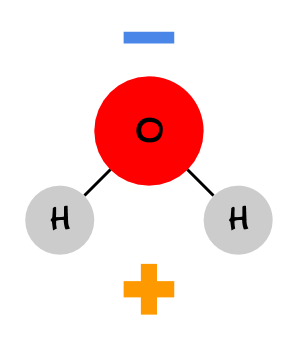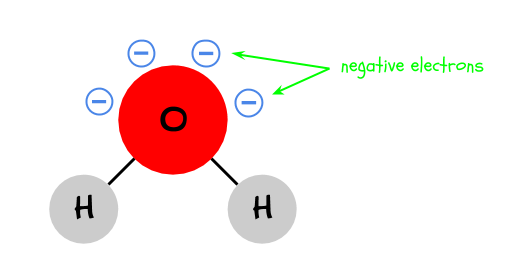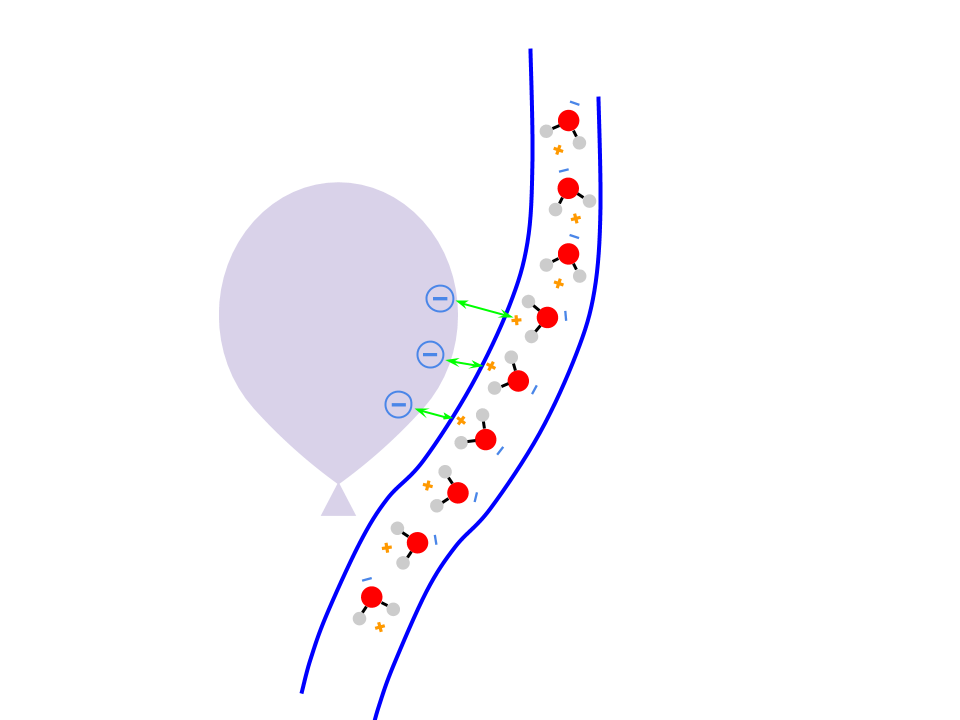Balloon & Stream Demo
2020-06-20
Bend water with a charged balloon.
Questions to explore:
- What does it mean for water to be polar?
- What are electrons?
- What happens when two opposite charges get near each other?
What you'll need:
- Plastic cup or container ▲ Those 16 oz cylindrical takeout containers work well.
- Safety pin
- Water
- Balloon
What to do:
- Use the safety pin to poke a hole in the center of the bottom of the plastic container. This is your “stream cup.”
- Fill the stream cup with water and make sure a thin, straight stream issues from the bottom.
- Blow up the balloon and rub it on a carpet ▲ Or someone's head :) to build up a charge.
- Hold the balloon next to the stream coming from the stream cup and watch as the water bends towards it.
How it works:
To understand how the balloon bends the water, you need to know three things.
1. Water (H2O) is a polar molecule. This means that it has one negative end (or pole) and one positive end (or pole). A water molecule is made of three atoms: two hydrogen and one oxygen. The negative side is the oxygen and the positive side is the hydrogen.
▲
To learn why this is the case, visit the minipost on polarity.

2. Atoms contain tiny negative particles called electrons. More electrons make something more negative.

3. Opposite charges attract. When a positive and a negative charge get close to each other, they will be drawn together like magnets.

So what does this all have to do with the balloon? When you rub the balloon on a rug, some of the electrons on the rug are picked up by the balloon. Picture electrons as a layer of dust covering the rug. When you disturb this layer, the balloon will get dusty.

Now you have a negatively charged balloon and a stream of water molecules with positive and negative ends. When you hold the negative balloon next to the water, the water molecules flip so that their positive sides (hydrogen) are facing the balloon. The water molecules are then pulled toward the balloon because the positive hydrogen sides are attracted to the negative electrons on the balloon.
